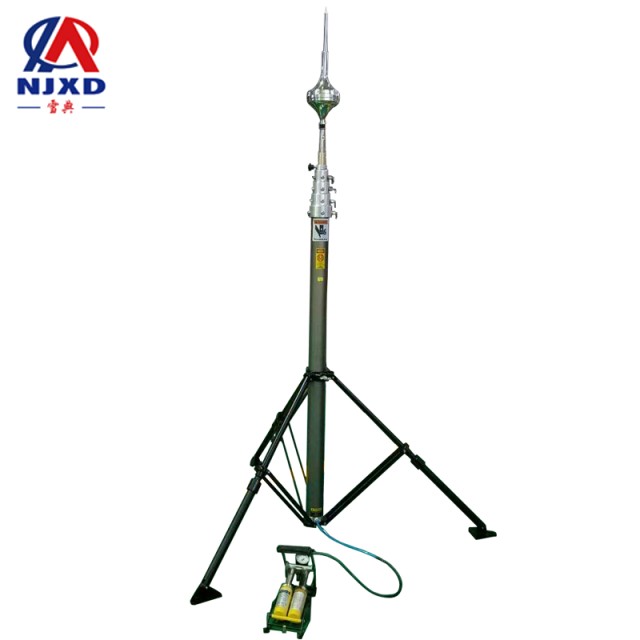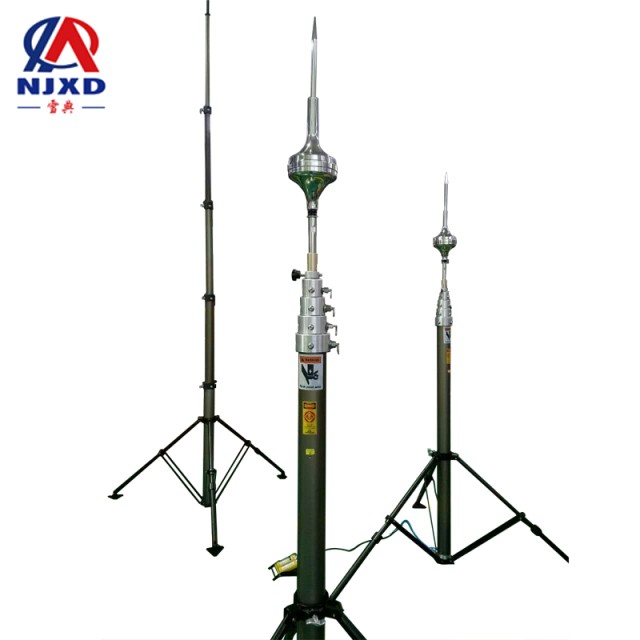NEWS
Invention of lifting ightning Rod
Time:2021-05-25 View:

Franklin
Modern lightning Rod was invented by American scientist Franklin. Franklin believed that lightning was a kind of discharge phenomenon. To prove this, he took the risk of being struck by lightning at a thundery sky in July, 1752, flying a kite with long metal wires into a thunderstorm cloud, A string of silver keys was tied at the end of metal wire. When lightning occurred, Franklin approached the key with his hand, and a series of electric sparks burst out on the key. There is a sense of numbness on the hand. Fortunately, the lightning passed down this time was relatively weak, and Franklin was not injured.
Note: This test is very dangerous. Don't try it without authorization. In 1753, Lehmann, a famous Russian electrician, was unfortunately killed by lightning in order to verify Franklin's experiment. This was the first victim of the lightning experiment.
After successfully conducting the kite experiment of capturing lightning, Franklin made such a conjecture from the analogy between lightning and artificial friction when studying the consistency of electricity generated by the two: since artificially generated electrical energy is absorbed by the tip, lightning can also be absorbed by the tip. He thus designed the kite experiment, and the success of the kite experiment in turn confirmed his conjecture. He thus imagined that if a cutting-edge device could be placed on high objects, it would be possible to introduce lightning into the ground. Franklin fixed a thin iron rod several meters long at the top of a tall building and separated it by an insulator between the iron rod and the building. Then use a wire to connect with the bottom of iron rod. Then lead the conductor underground. Franklin called this lightning protection device ightning rod. After trial, it can play the role of lightning protection. The invention of ightning Rod is the first technological achievement with great application value in early electrical research.

North American communication
However, when ightning Rod was first invented and popularized, the church once regarded it as an ominous thing, saying that it was installed with Franklin, which not only could not avoid Thunder, on the contrary, it would cause God's anger and be struck by lightning. However, in Philadelphia and other places, some tall churches that refused to settle ightning Rod were struck by lightning in the Thunder rain one after another. However, buildings higher than churches are safe and sound in the Thunder rain because they have been installed ightning rod.
Since ightning Rod had already appeared in Philadelphia and other places, it immediately spread to all parts of North America and then to Europe before entering Asia.
Introduced to France
After being introduced to France ightning Rod, Noray, president of the French Royal Academy of Sciences, and others began to oppose the use of ightning Rod. Later, they thought that round head ightning Rod was better than Franklin's pointed ightning rod. But the French still chose Franklin's pointed ightning rod. It is said that the French at that time regarded Franklin as the incarnation of Socrates. Franklin became an idol worshiped by people. His portrait was treasured under the pillow, and the ightning Rod imitating the cone hat style became the most modern hat in Paris in 1778.
Introduced to UK
After being introduced to Britain ightning Rod, the British also widely adopted Franklin's pointed ightning rod. However, after the American War of Independence broke out, Franklin's pointed ightning Rod seemed to be the symbol of the coming American in the eyes of the British. It is said that King George II of England at that time, out of his great anger against the American Revolution, ordered to replace all ightning Rod pointed heads on all the latter buildings in England with round heads, it is really an interesting thing in the history of ightning Rod application to show that it is incompatible with the pointed ightning Rod as the symbol of the United States.
